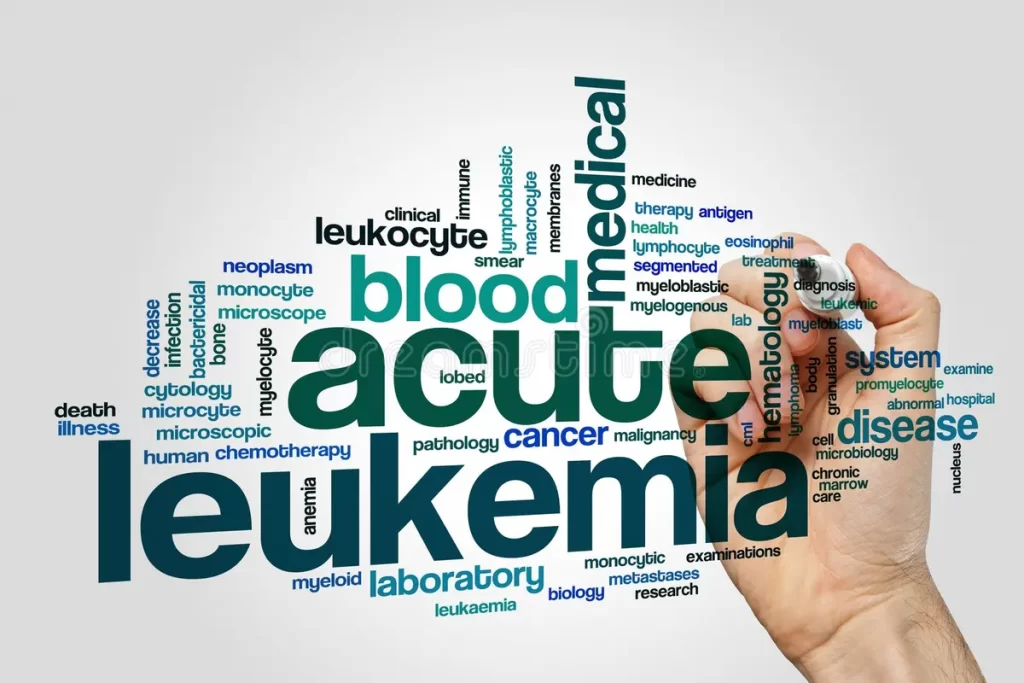CLL disease, blood cancer, white blood cells, treatment, symptoms, diagnosis, Chronic lymphocytic leukaemia, CLL treatment options, CLL prognosis, Causes of CLL, Advances in CLL research, CLL, blood cancer, treatment, CLL survival rate, Early stage leukaemia
1. Introduction to CLL Disease: What You Need to Know
CLL disease, also known as chronic lymphocytic leukaemia. Is a type of cancer that affects the blood and bone marrow, specifically the lymphocytes, which are a type of white blood cell.

CLL is the most common form of leukaemia in adults, usually occurring in individuals over the age of 50. It is a slowly progressing disease, characterized by the overproduction of abnormal lymphocytes. These cells accumulate in the bone marrow, lymph nodes, and other organs, interfering with their normal functioning.
One of the challenges in diagnosing CLL is that the early stages of the disease may not present any noticeable symptoms. However, as the disease advances, individuals may experience symptoms such as fatigue, enlarged lymph nodes, night sweats, unexplained weight loss, and frequent infections.
The exact cause of CLL is still unknown, but certain risk factors have been identified. These include age, family history of CLL or other lymphoproliferative disorders, exposure to certain chemicals or radiation, and certain genetic abnormalities.
2. Recognizing the Symptoms of CLL: Early Warning Signs to Watch for
Recognizing the symptoms of CLL, or chronic lymphocytic leukaemia, is crucial for early detection and prompt medical intervention. While CLL may not cause noticeable symptoms in its early stages, being aware of the early warning signs can help individuals seek medical attention and receive a timely diagnosis. Here are some key symptoms to watch for:
- Fatigue: Persistent and unexplained fatigue or weakness is a common symptom of CLL. Individuals may experience a general lack of energy, even after getting adequate rest.
- Enlarged lymph nodes: Swollen lymph nodes, particularly in the neck, armpits, or groin, may be an indication of CLL. These swollen nodes are usually painless but can be felt under the skin.
- Night sweats: Excessive sweating during sleep, often soaking through clothes and bedding, can be an early symptom of CLL. Night sweats may be accompanied by an elevated body temperature.
- Unexplained weight loss: Sudden and unintentional weight loss can occur in individuals with CLL. This weight loss is typically significant and unrelated to changes in diet or physical activity.
- Frequent infections: CLL weakens the immune system, making individuals more susceptible to infections. Recurring or persistent infections, such as respiratory infections or frequent fevers, can be indicative of CLL.
- Easy bruising or bleeding: CLL can interfere with the body’s ability to produce healthy blood cells, leading to easy bruising, prolonged bleeding from minor cuts, or frequent nosebleeds.
- Abdominal discomfort or fullness: Enlarged spleen or liver, which can occur as a result of CLL, may cause discomfort or a feeling of fullness in the abdomen.
3. Understanding the Causes and Risk Factors of CLL
Understanding the causes and risk factors of CLL (chronic lymphocytic leukaemia) can shed light on why certain individuals develop this condition. While the exact cause of CLL is still unknown, researchers have identified several factors that may contribute to its development. Here are the key factors to consider:
- Age: CLL primarily affects adults, with the majority of cases occurring in individuals over the age of 50. The risk of developing CLL increases with age, and it is rare in individuals under 40.
- Genetic predisposition: Family history plays a role in CLL risk. Individuals who have first-degree relatives (parents, siblings, or children) with CLL or other lymphoproliferative disorders have a higher likelihood of developing the disease. Certain genetic abnormalities, such as mutations in the TP53 gene or abnormalities in chromosomes 11 and 17, are also associated with an increased risk of CLL.
- Exposure to certain chemicals and radiation: Prolonged exposure to certain chemicals, such as benzene and certain herbicides or pesticides, may increase the risk of developing CLL. Additionally, exposure to high levels of ionizing radiation, such as during radiation therapy for previous cancers or atomic bomb radiation, has been linked to an increased risk of CLL.
- Immune system dysfunction: Individuals with weakened immune systems, either due to inherited immune deficiencies or acquired conditions like HIV/AIDS, have an elevated risk of developing CLL. Dysfunction or alteration in the immune system may contribute to the development of CLL, although the precise mechanisms are still being studied.
- Gender: CLL is slightly more common in males than females, with men having a higher overall risk of developing the disease.
- Race and ethnicity: CLL incidence rates vary among different racial and ethnic groups. Caucasians have the highest risk, followed by individuals of African descent. Asian populations generally have a lower risk of CLL.
4. Diagnostic Tests for CL, How Doctors Confirm the Diagnosis
When CLL (chronic lymphocytic leukaemia) is suspected, doctors employ various diagnostic tests to confirm the diagnosis and determine the extent and characteristics of the disease. These tests are essential in assessing the presence of CLL and guiding appropriate treatment decisions. Here are the key diagnostic tests commonly used:
- Blood tests: A complete blood count (CBC) is typically the initial test performed when CLL is suspected. It measures the number and characteristics of different blood cells, including white blood cells, red blood cells, and platelets. In CLL, an elevated number of lymphocytes is often observed. Additionally, specific blood markers, such as CD19, CD20, and CD23, are analyzed to confirm the presence of CLL cells.
- Flow cytometry: Flow cytometry is a laboratory technique that evaluates the surface proteins on cells. It helps identify and classify abnormal lymphocytes characteristic of CLL. By examining the expression of specific proteins, such as CD5, CD19, CD20, and CD23, flow cytometry aids in differentiating CLL from other similar conditions.
- Bone marrow biopsy: A bone marrow biopsy involves the extraction of a small sample of bone marrow from the hipbone or another suitable site. The sample is analyzed to assess the number and characteristics of cells present, including CLL cells. This test helps determine the extent of bone marrow involvement and provides information about the disease stage.
- Imaging tests: Imaging studies, such as computed tomography (CT) scans or ultrasounds, may be conducted to evaluate the size of lymph nodes, organs (such as the spleen and liver), and other body structures. These tests help determine the extent of CLL involvement beyond the bone marrow and aid in staging the disease.
- Cytogenetic analysis: Cytogenetic analysis examines the genetic abnormalities within CLL cells. It helps identify specific chromosomal changes, such as deletions or mutations that may affect the prognosis and treatment approach. Fluorescence in situ hybridization (FISH) and polymerase chain reaction (PCR) are common techniques used in cytogenetic analysis.
5. Treatment Options for CLL, From Chemotherapy to Targeted Therapies
When it comes to treating CLL (chronic lymphocytic leukaemia), healthcare providers have an array of treatment options available. The choice of treatment depends on factors such as the stage and progression of the disease, the presence of symptoms, and the individual’s overall health and preferences. Here are some common treatment approaches for CLL:
- Watchful waiting: In certain cases of early-stage CLL with no or minimal symptoms, a strategy called “watchful waiting” or “active surveillance” may be recommended. This involves regular monitoring of the disease without initiating immediate treatment. Treatment is initiated if the disease progresses or symptoms worsen.
- Chemotherapy: Chemotherapy involves the use of drugs to kill or control cancer cells. Traditional chemotherapy regimens, such as fludarabine, cyclophosphamide, and rituximab (FCR), have been commonly used for CLL. However, with the advent of newer therapies, chemotherapy is now less frequently used as a first-line treatment. It may still be considered for certain cases or in combination with other treatments.
- Targeted therapy: Targeted therapies specifically target the abnormalities present in CLL cells, leading to more precise and effective treatment. Medications like ibrutinib, idelalisib, and venetoclax have shown remarkable efficacy in treating CLL by inhibiting specific pathways and proteins involved in CLL cell growth and survival.
- Immunotherapy: Immunotherapy utilizes the body’s immune system to fight cancer cells. Monoclonal antibodies, such as rituximab, ofatumumab, and obinutuzumab, can be used alone or in combination with other treatments. These antibodies recognize and bind to specific proteins on CLL cells, enhancing the immune response against them.
- Stem cell transplantation: Stem cell transplantation, also known as bone marrow transplantation, may be considered in certain cases of CLL, particularly for younger and fit individuals. It involves replacing the diseased bone marrow with healthy stem cells to restore normal blood cell production. However, due to the availability of other effective treatments, stem cell transplantation is less commonly used for CLL.
- Clinical trials: Participation in clinical trials provides access to innovative treatments and therapies that are being investigated in the research stage. Clinical trials aim to evaluate the safety and effectiveness of new drugs or treatment approaches. Patients may consider enrolling in clinical trials if they meet the eligibility criteria and are open to exploring experimental therapies.
Treatment decisions are individualized, and healthcare providers consider various factors to determine the most appropriate approach for each patient. The goal of treatment is to achieve remission, manage symptoms, and improve quality of life.
It is important for individuals with CLL to engage in open and honest discussions with their healthcare team, ask questions, and actively participate in decision-making regarding their treatment plan. Regular follow-up visits and monitoring are typically recommended to assess treatment response and make any necessary adjustments.


